A German Breakfast from 1896
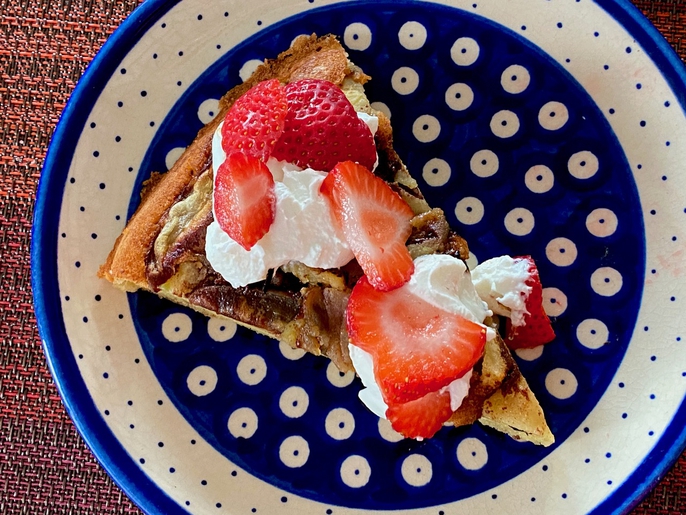
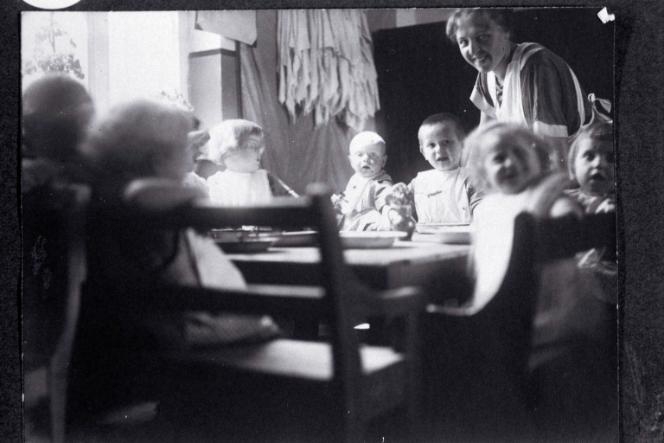
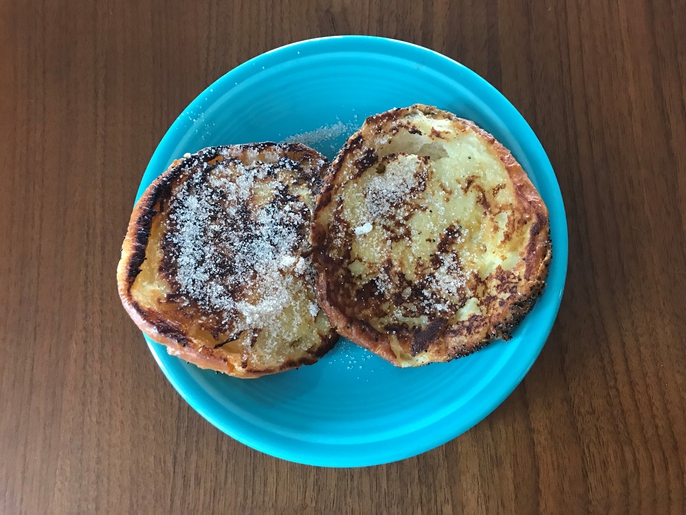
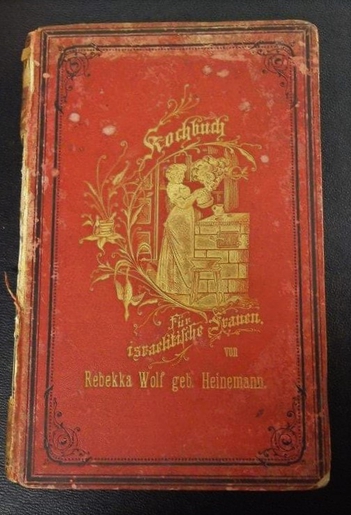
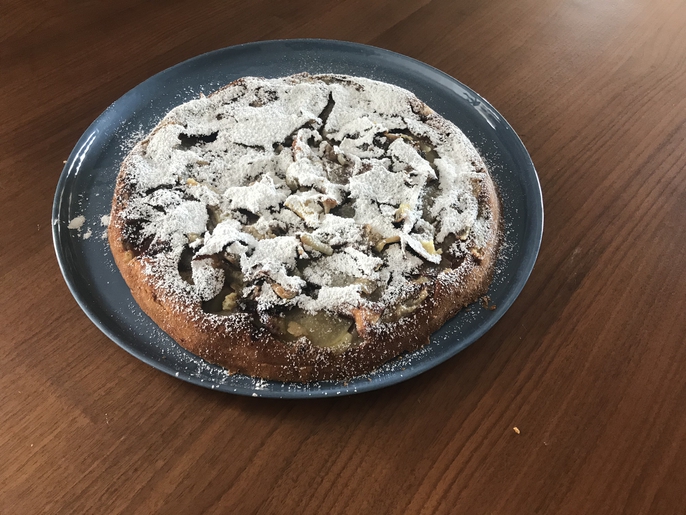
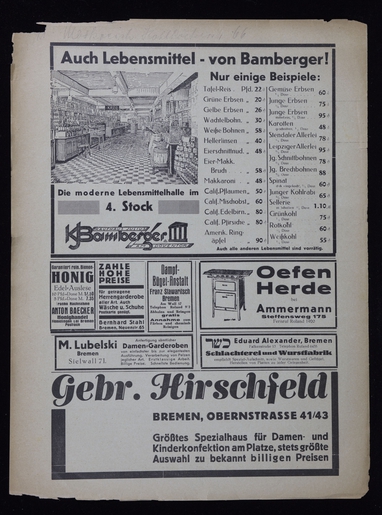
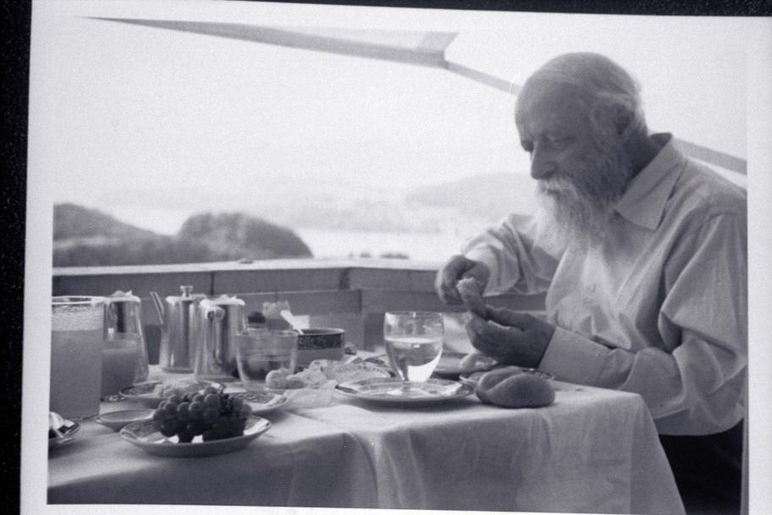
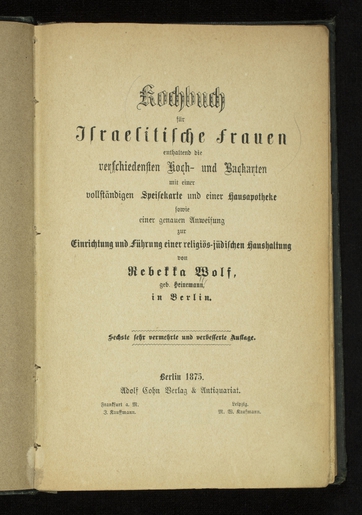
I spoke with some friends about making a recipe from Kochbuch für israelitische Frauen. We chose to make two traditional German recipes, “Apfel-Eierkuchen” (an apple-egg pancake) and “arme Ritter” (“poor knights,” an egg-and-milk soaked toast similar to French toast), for a brunch together.
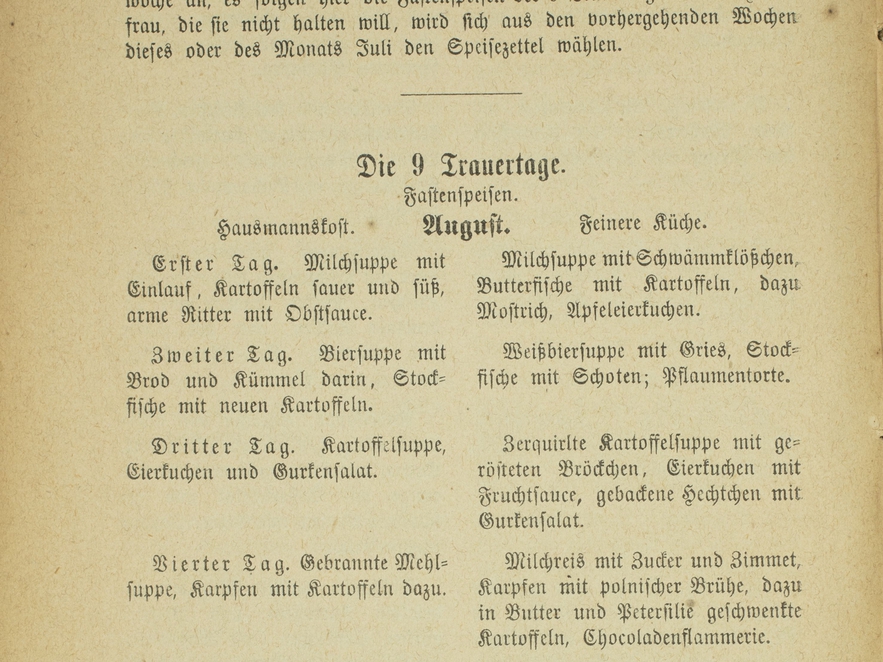
Although most people think of pancakes and French toast as brunch foods, they were originally popular dinner and dessert dishes. In her cookbook's menus for Yom Kippur, Rebekka Wolf suggested making “arme Ritter” for an everyday dessert and “Apfel-Eierkuchen” as a dessert for a finer meal. Pancakes and egg-toasts both date back to Roman times and evolved as they spread through Europe. Both dishes may have been absorbed by Jewish cooks from their gentile neighbors.
Pancakes were first mentioned in Jewish sources in the 12th century in Germany. Rudimentary pancakes developed in Roman times and traveled through Persia to Hungary, where they were known as “Palacsinta,” and gradually spread through Central and Eastern Europe, adding eggs and fat. Also known as "palatschinke" and blintzes, pancakes could be fried in butter for milk dishes or schmaltz for meat dishes. Egg-toasts like “arme Ritter” began in Roman times as fried milk-soaked bread. The dish evolved during the medieval period in Europe to include eggs and sugar (often substituting cow’s milk with almond milk or juice).
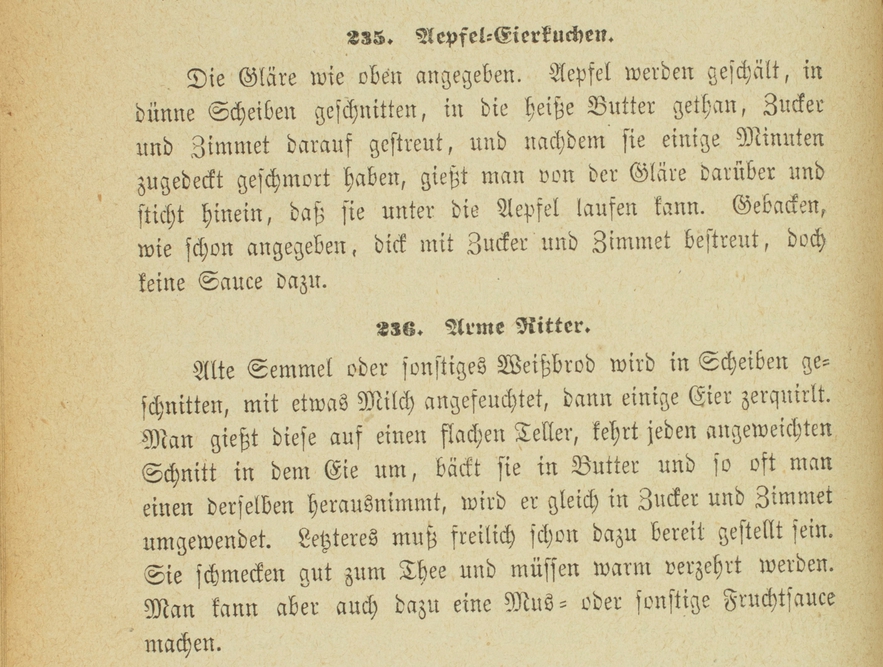
As is common with these old cookbooks, there are few measurements and not much description. One would assume that the Jewish housewife in Germany from 1896 grew up learning recipes and the basics from her own mother. Some of the directions in these cookbooks consist of lines such as, “first make a batter” or “Put in the oven until brown and firm.” With these older recipes it is helpful to have a little direction from someone who knows how to prepare the basics. Luckily, in this case, my German friend’s mother made both these things when she was growing up and was familiar with the recipes.
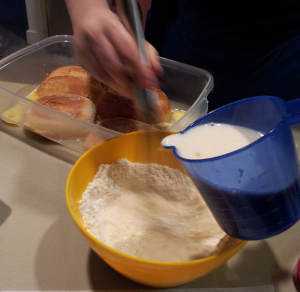
We made both recipes simultaneously. In the yellow bowl you see us preparing the batter necessary for the apple pancakes. Behind it, you see preparations for the poor knights. Notice that the directions for the pancake batter are pretty much the same as today (you could use any pancake batter recipe, preferably on the thinner side). For the poor knights, you use some German rolls. The recipe calls for "semmel," a type of German bread roll, but any rolls would probably do. You then break a number of eggs in a bowl or container, and add some milk to create an “egg-wash.”
You see how the rolls are placed in the egg-wash. The egg wash consists of six eggs and half a cup of milk mixed in. The rolls should soak in the egg-wash awhile, and then after a time you flip the rolls over. The poor knights pretty much absorb the entire egg-wash. So let’s do the "Apfel-Eierkuchen" while our poor knights are taking their bath!
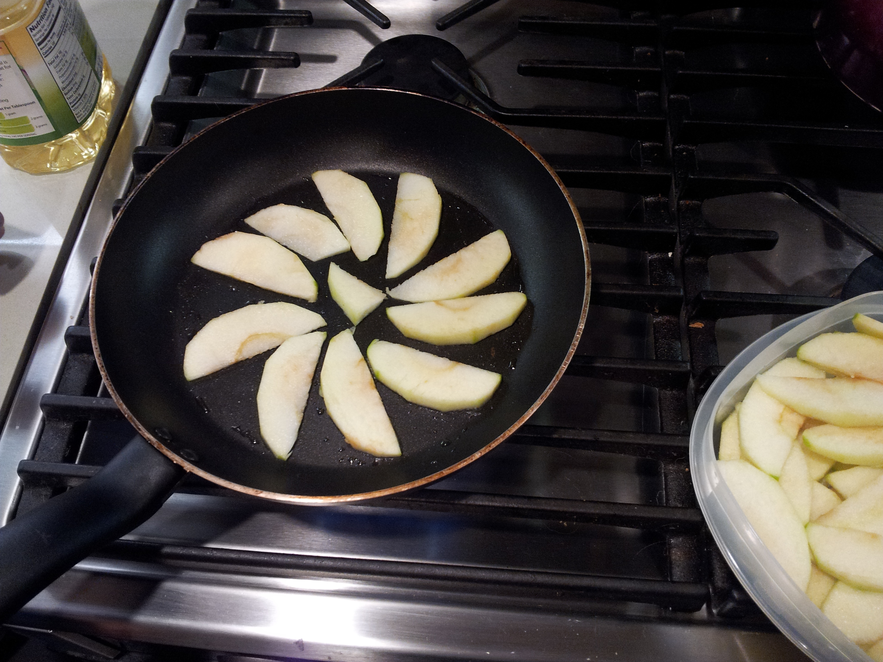
While the "semmel" are soaking, make an pinwheel of apple slices in a well-greased pan.
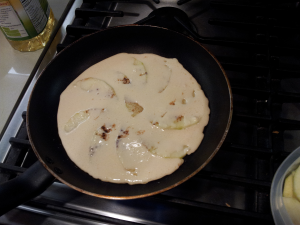
Then sprinkle the apple slices with sugar and cinnamon and pour the batter over the top.
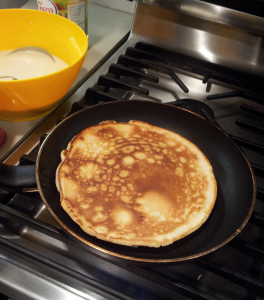
It cooks like a regular pancake. Flip it over when you see that it is ready. Note that, when it is made with the apples on bottom, the pancake is more difficult to flip. It should be pretty firm before you flip it, and you might need to use two spatulas.
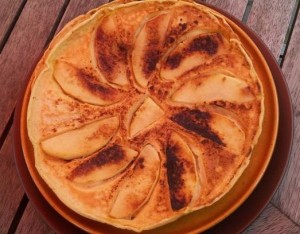
When the pancakes is browned on both sides, it is ready to serve! The final pancake will have a pretty pinwheel on the top to admire!
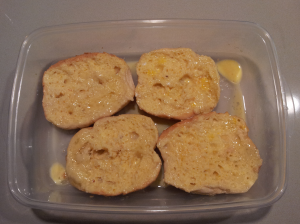
Meanwhile, our knights have been bathing. They have been flipped over once in the egg-wash, and have soaked up most of the yolk and milk. They look nice and moist. We placed them in the frying pan and poured the little remaining egg wash over them. Then, just like American French toast, you make sure each side is browned before removing from the pan. Frying milk-and-egg soaked bread seems like a good way for the 19th century housewife to use up stale bread.
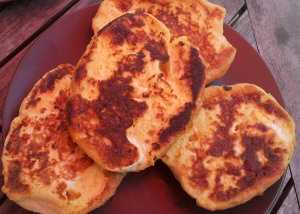
Since the "Apfel-Eierkuchen" looked so delicious, we made more than one! But please note that for some of them, we poured the batter in the pan and then put the seasoned apples on top. This is different than the old recipe, but it is usually how "Apfel-Eierkuchen" are made in Germany today. Using the current method, it is much easier to flip the pancake. But in the original recipe, the apples are hidden from view and can be a pleasant surprise to the consumer
My friend whipped up a quiche and a few other nice touches, and we had our delightful brunch of 19th century dishes in her backyard. It was a rather rich breakfast, but very delicious. Two of my German friends told me that when you are going to have poor knights for a meal, you should always starve yourself first! This seems like good advice!
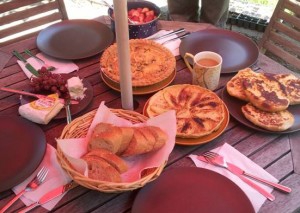
Bibliography:
Cooper, John. Eat and be satisfied. Northvale, N.J.: Jason Aronson, 1993.
Marks, Gil. "Blintz." Encyclopedia of Jewish food. Hoboken : Wiley, 2010. Overdrive. Digital file. July 2, 2020.
Marks, Gil. "Palascinta." Encyclopedia of Jewish food. Hoboken : Wiley, 2010. Overdrive. Digital file. July 2, 2020.
Marks, Gil. "Revanada de Parida." Encyclopedia of Jewish food. Hoboken : Wiley, 2010. Overdrive. Digital file. July 2, 2020.
Roden, Claudia. The book of Jewish food : an odyssey from Samarkand to New York. New York : Alfred A. Knopf, 1997.